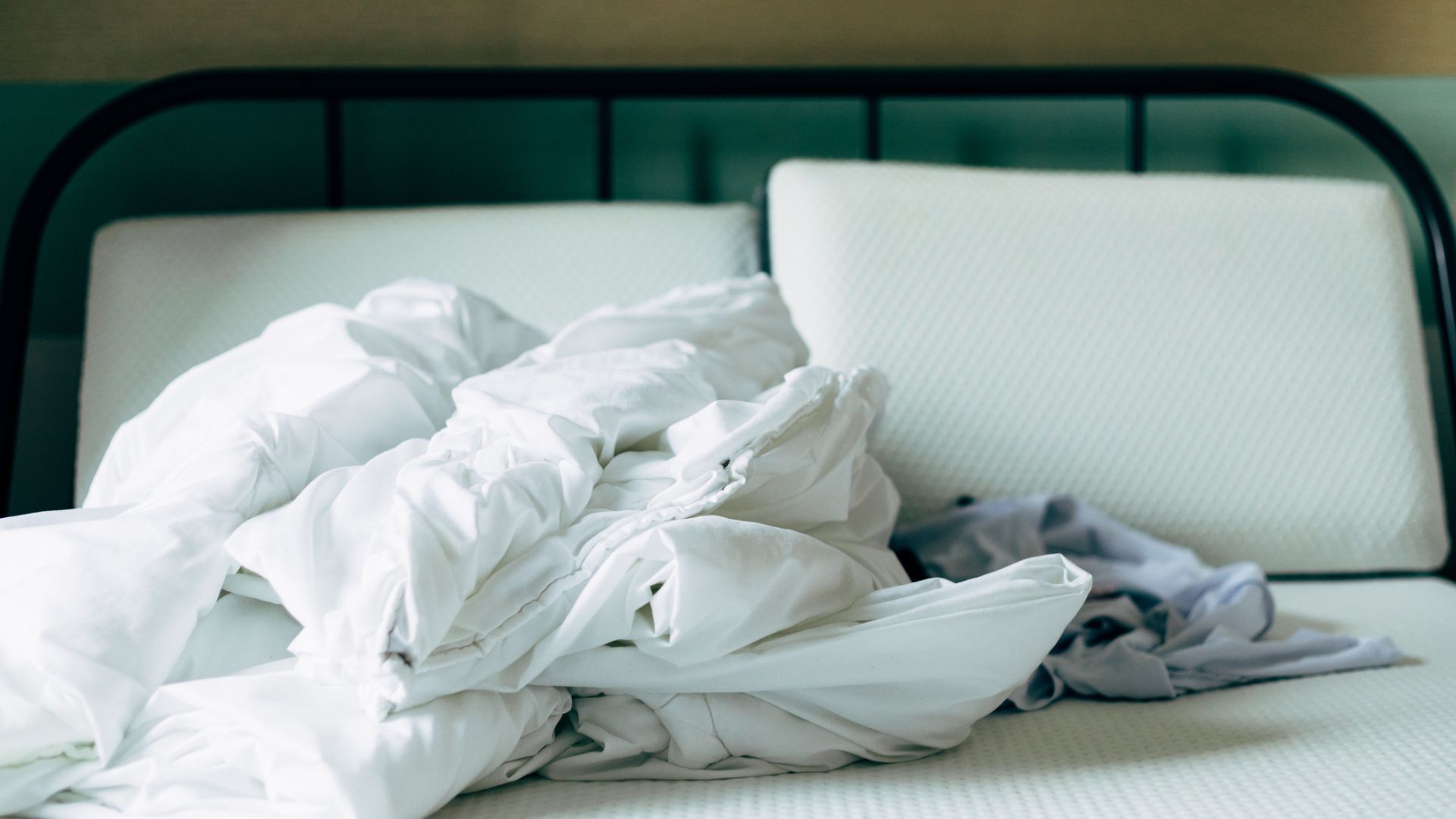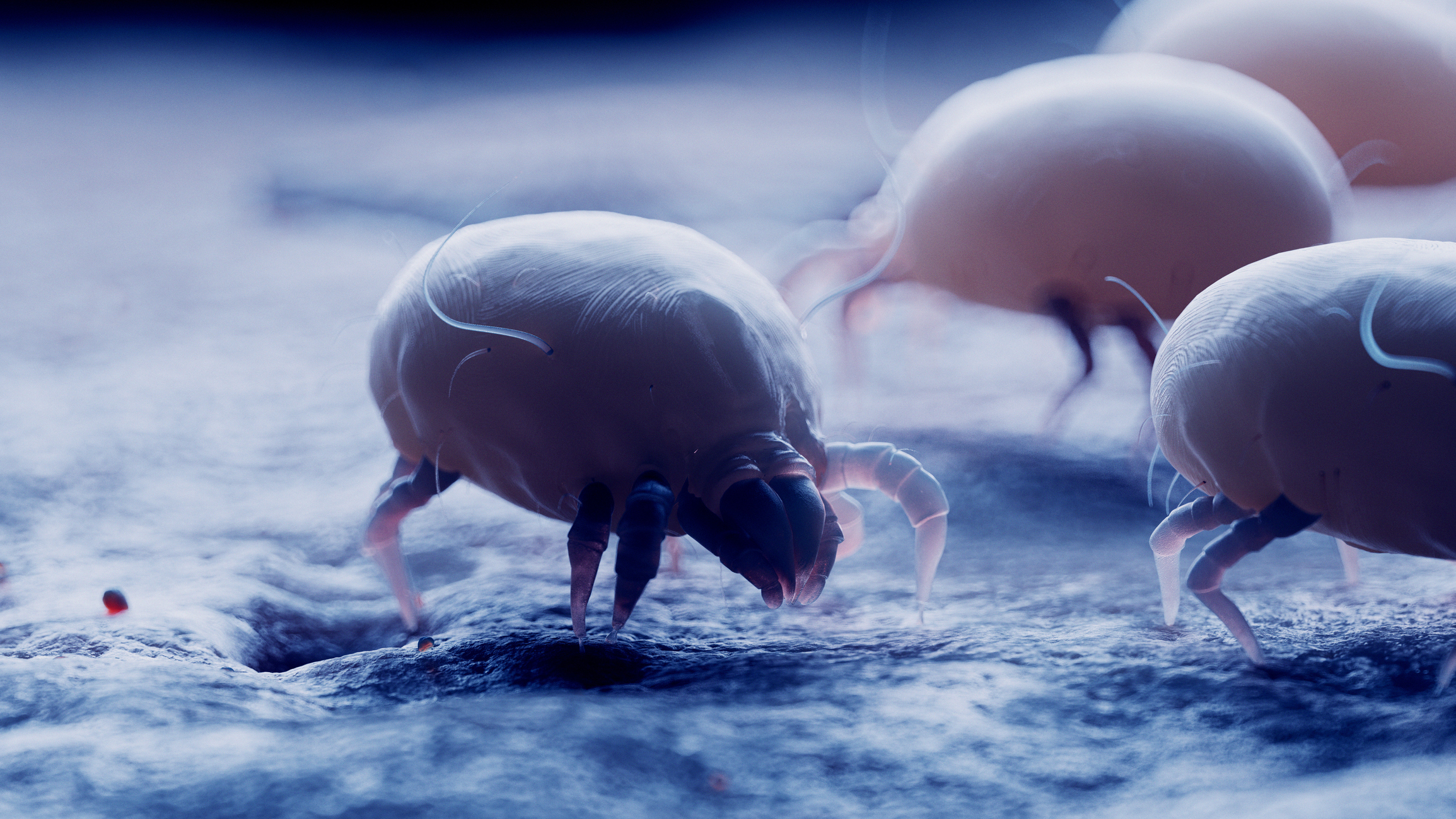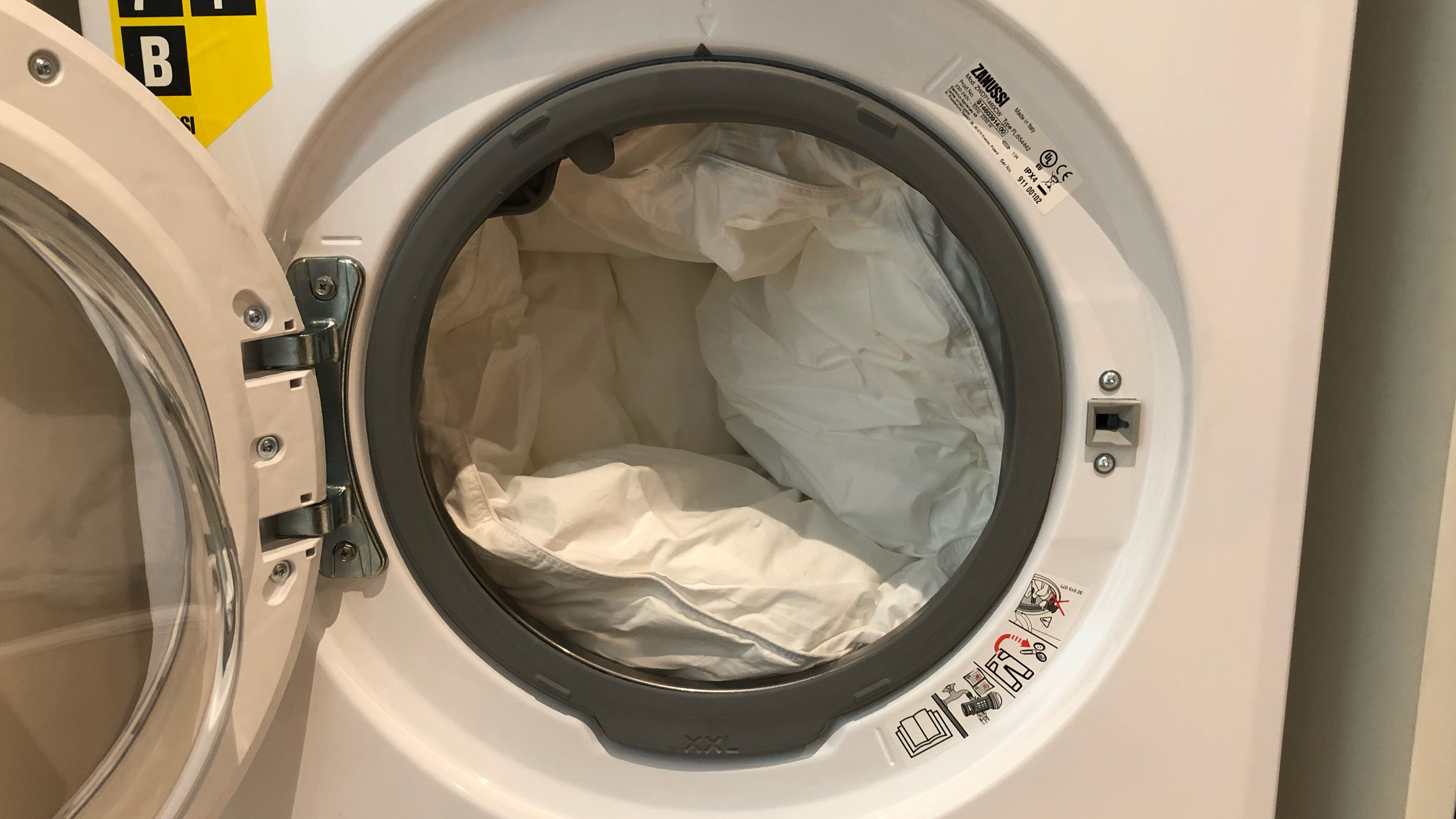
Dust mites and their droppings can impact both your health and your sleep, especially if you have allergies. Which is why knowing how to remove dust mites from your mattress, pillows and bed sheets is something we should all have in our arsenal of cleaning tips.
Dust mites can make their home in even the best mattresses with the latest in hypoallergenic properties. They thrive warm, moist environments like mattresses and feast on dead skin cells, dust and pet dander, which naturally build within your home. However, their droppings can leave you with red, itchy eyes, itchy skin, sneezing, a stuffy or runny nose and a sore throat even heightening symptoms of eczema and asthma.
The good news is that there are ways that you can get rid of these little critters, so we’ve put together seven proven methods that will get remove dust mites from your mattress, pillows and bed sheets. Plus, we've also outlined how to prevent them from coming back. Let's get started.
What are dust mites?
Dust mites are microscopic pests that live within dust in your home. These mites thrive in warm, humid environments like mattresses, bedding and carpets. They are so small that it’s impossible to see them with the naked eye but signs that you have dust mites living in your mattress such as waking up with a dry cough or if you find it difficult to breathe at night. Dust mites can also cause some other physical symptoms such as dry itchy eyes, a dry cough and feeling stuffy when you wake in the morning. These symptoms can disrupt your sleep leaving you feeling tired and irritable.

Dust mites are particularly attracted to beds and mattresses because of a few factors, first of all, they like to feed on dead skin flakes, which we naturally shed throughout the night. Also, beds tend to attract dust, areas like headboards or under the bed sometimes get neglected when it comes to the cleaning schedule and there are plenty of nooks and crannies for dust mites to set up camp. That’s why it’s so important to know how to remove dust mites from your mattress, pillows and bed sheets and make cleaning all aspects of your bed a regular routine.
7 Proven tips to remove dust mites from your mattress, pillows and bed sheets
1. Vacuum often
Your mattress is where you’re most likely to find bed bugs. Not only is it warm and humid but there are plenty of places like in the edges and seams for them to hide out. Vacuuming your mattress will not only get rid of bed bugs but it’ll also keep them from coming back. Make sure that you vacuum every part of your mattress including the seams and the sides as well as the main sleeping surface.
This should be done at least once a week and be a big part of your cleaning routine as vacuuming also removes the dirt, debris and dead skin flakes that are on your mattress which act as a food source for the mites, and if you remove their food then the population will naturally decline. Also, don’t forget to vacuum the surrounding areas of your bed such as your headboard and base.
2. Make a DIY dust mite spray
@refinedliving ♬ Greek Tragedy (Oliver Nelson TikTok Remix) - The Wombats
If you want to remove dust mites and freshen up your sleep surface then make this spray. Start off by vacuuming your mattress, getting in to all the nooks and crannies. Then mix together 1 cup of water, 1 cup of white vinegar, 10 drops of peppermint essential oils, 10 drops of tea tree essential oil and 10 drops of lavender essential oil. Add this mixture to a spray bottle and spritz your mattress and leave to dry.

This mixture works because the water and white vinegar work together to disrupt their living environment. Dust mites before a slightly alkaline environment so the acidity of the vinegar will make it hard for them to thrive. Also, the vinegar will help dissolve any left behind dead skin flakes that the vacuum didn’t pick up, removing their food source.
The essential oils also play an important part. The strong scent of peppermint will irritate or disrupt the nervous system of dust mites so they’ll avoid the area that has been sprayed. Lavender is similar to peppermint and the strong smell will likely put the dust mites off. Whilst tea tree oil is effective against dust mites due to its insecticide and antibacterial properties.
3. Wash your bedding often
How often should you change your bedsheets is a question that we see pop up often here at Tom’s Guide. Experts recommend that you change your sheets at least once a week. Dust mites have an ideal temperature of 59-70º F (15-21º C) so if you want to kill any dust mites that are settled on your bed sheets then you should wash your bedding on a hot wash of 140º F (60º C).
Take in to account any special instructions on the care labels of your sheets. It’s recommended that you tumble dry your sheets if possible as this extra heat will eliminate any surviving dust mites. Line drying is another good idea, as the sun’s UV rays will get rid of any dust mites, bacteria or allergens that are hanging around.
4. Use a UV light vacuum
If you’ve got the budget and you are particularly sensitive to the negative effects of dust mites, then it’s worth investing a UV light vacuum. A UV light vacuum can help you deep clean your mattress at home by helping to disinfect and sanitize the surface of your mattress. UV-C light is a specific type of ultraviolet light that penetrates the surface layer of the mattress and disrupts the mites’ cells therefore eliminating them. A lot of these types of vacuums come with a HEPA filter, which help remove the dust mite allergens which will trigger allergy symptoms.
5. Don't forget to wash your pillows
We often forget about cleaning our pillows but these attract dirt, sweat and allergens just like your mattress. How to spring clean your pillows depends on what type of pillow you have but they can usually be machine washed, just check the care labels before popping them in your machine to make sure that you have the right temperature setting.

Also, ensure you don't use as much laundry detergent as you would if you were washing your clothes. This will help to avoid detergent build up which over time will cause the filling to clump together. Also, always ensure the pillow is fully dry before you put it back on the bed so that mold and mildew don’t have a chance to develop.
6. Reduce humidity in your room
Dust mites thrive in hot and humid environments. Bedrooms are particularly humid, whilst we sleep we breathe out moisture and a typical adult can breathe out up to a pint of water vapour per night. This moisture then gets into the air, and if the doors and windows are closed can become trapped.
If you have an en-suite then the steam from your hot shower can cause excess water in the air again, creating a moist and humid environment. You can reduce the humidity in your bedroom by opening up your windows during the cooler parts of the day. If that’s not enough then you could invest in one of the best dehumidifiers which as well as eliminating moisture can also tackle condensation, mold and unpleasant odors.
7. Stop making your bed
We’ve all been taught that the first thing you should do when you get up is make your bed but there’s a reason why you shouldn’t make your bed in the morning. Making your bed as soon as you get up could lock in the moisture that has been created whilst we sleep. Since dust mites love humid environments this creates a perfect environment for them to breed.
Instead of making your bed fold your duvet down to the bottom each morning and let your sheets have a good airing. Ideally, open your windows and let some air flow through which will also help to reduce some humidity in the room. And if you can open up your curtains or blinds then the UV rays from the sun can also help to kill off any dust mites hanging around.
How to protect your bed from dust mites
Keeping your bed free of dust mites doesn’t have to be as scary as it sounds. Getting in to a regular cleaning routine that involves not only vacuuming your mattress but also the whole bed frame. Dusting the sides and bedside tables is also another must do for your cleaning list because if there’s no dust, there’s no dust mites. Making sure you wash your bedding including pillows and bed sheets on a hot wash at least once a week is another way to keep dust mites at bay.
Investing in one of the best mattress protectors or mattress encasements will also help keep dust mite populations down. Mattress protectors sit on top of your bed and create a barrier between you and your mattress and are often machine washable, while mattress encasements cover the whole of your mattress and also offer protection against bed bugs. You can also buy pillow encasements which will lock out dust mites and allergens, leading to a better night’s sleep.







